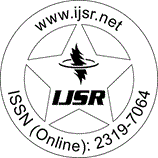Downloads: 123 | Views: 375
Research Paper | Chemistry | India | Volume 6 Issue 2, February 2017 | Popularity: 6.7 / 10
Synthesis and Spectroscopic Properties of Co(II) Complexes derived from New Aroylhydrazone Ligands
Pramod Kumar Singh, Kamalika Banerjee, Sangeeta Singla
Abstract: Cobalt (II) complexes of N- (2-hydroxy-1-naphthaldehyde- N^'- (4-nitrobenzoyl)hydrazone (H2L1), N- (2-hydroxy-4-methoxybenzaldehyde)-N^'- (2-furoyl) hydrazone (H2L2), N- (2-hydroxyacetophenone)-N^'- (2-theonyl) hydrazone (H2L3) and N- (2-hydroxy-5-methylacetophenone)-N^'- (3-toloyl) hydrazone (H2L4) have been synthesized and characterized by elemental analyses, electronic, infrared, NMR and EPR spectral studies, magnetic susceptibility data and thermogravimetric analysis. Conductance measurements in dimethylformamide (DMF) indicate the complexes to be non-electrolytic in nature. The IR spectra indicates that the ligand molecule act as dibasic tridentate ligand and coordinated to Co (II) ion through phenolic protons (except in H2L1 by naphtholic proton) azomethine nitrogen atom, and enolic protons by double deprotonation of the ligands. The magnetic and spectral data suggest the octahedral geometry for all the Co (II) complexes and analytical data indicate 11 stoichiometries for all the complexes. The antibacterial activity of the ligands and their Co (II) complexes were studied against both Gram-positive (staphylococcus aureus) and Gram-negative (Escherichia coli, Klebssiella pneumoniae) bacteria using minimum inhibitory concentrations (MICs) method.
Keywords: Co II complexes, nitrobenzoyl hydrazone, furoyl hydrazone, theonyl hydrazone, enolic proton, phenolic proton, azomethine
Edition: Volume 6 Issue 2, February 2017
Pages: 1911 - 1915
Please Disable the Pop-Up Blocker of Web Browser
Verification Code will appear in 2 Seconds ... Wait
